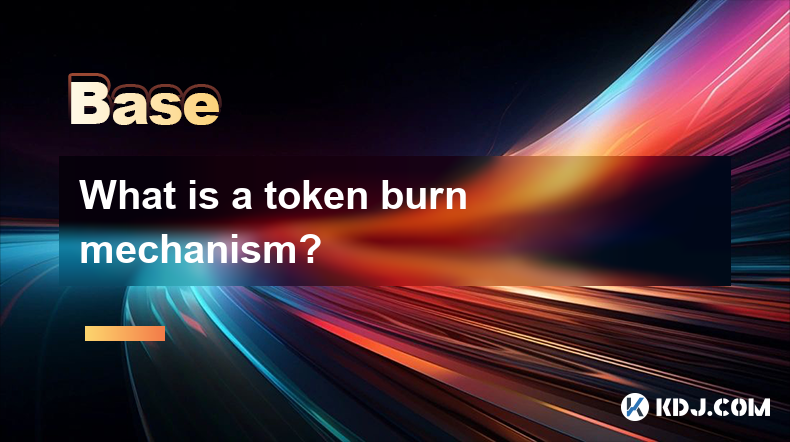-
 Bitcoin
Bitcoin $117,462.8204
-2.03% -
 Ethereum
Ethereum $3,061.1595
1.10% -
 XRP
XRP $2.9139
-2.19% -
 Tether USDt
Tether USDt $1.0002
0.02% -
 BNB
BNB $685.1357
-1.24% -
 Solana
Solana $161.3803
-2.11% -
 USDC
USDC $1.0002
0.04% -
 Dogecoin
Dogecoin $0.1948
-2.92% -
 TRON
TRON $0.2987
-0.89% -
 Cardano
Cardano $0.7330
-1.27% -
 Hyperliquid
Hyperliquid $47.7888
0.13% -
 Stellar
Stellar $0.4514
-2.93% -
 Sui
Sui $4.0169
2.74% -
 Chainlink
Chainlink $15.7088
-2.57% -
 Hedera
Hedera $0.2356
-3.33% -
 Bitcoin Cash
Bitcoin Cash $488.6656
-3.61% -
 Avalanche
Avalanche $21.2955
-1.47% -
 UNUS SED LEO
UNUS SED LEO $9.0415
0.42% -
 Shiba Inu
Shiba Inu $0.0...01332
-0.82% -
 Toncoin
Toncoin $3.0124
-0.62% -
 Litecoin
Litecoin $94.2175
-2.07% -
 Polkadot
Polkadot $4.0011
-0.61% -
 Monero
Monero $333.5714
-3.46% -
 Uniswap
Uniswap $9.1114
-1.56% -
 Dai
Dai $1.0000
0.02% -
 Ethena USDe
Ethena USDe $1.0005
0.00% -
 Bitget Token
Bitget Token $4.4951
1.87% -
 Pepe
Pepe $0.0...01242
0.47% -
 Aave
Aave $321.9943
0.51% -
 Bittensor
Bittensor $434.1984
5.13%
What is a token burn mechanism?
Token burn mechanisms, by reducing supply and potentially increasing value, aim to enhance tokenomics, but their effectiveness is contingent upon market conditions, implementation strategies, and the token's inherent utility.
Feb 15, 2025 at 09:37 pm

Key Points:
- Token burn mechanisms are strategies employed to reduce the supply of a cryptocurrency or token.
- By reducing supply, token burns can theoretically increase the value of the remaining tokens.
- Various reasons and methodologies exist for implementing token burns.
- The effectiveness of a token burn mechanism depends on several factors, including the specific implementation and market conditions.
Understanding Token Burn Mechanisms
1. Purpose of Token Burns:
Token burns aim to reduce the circulating supply of a cryptocurrency or token. This reduction can be permanent or temporary, depending on the design of the burn mechanism. By reducing supply, token burns can potentially increase the value of the remaining tokens.
2. Types of Token Burn Mechanisms:
- Manual Burns: These burns are initiated by the project team or a designated entity.
- Automatic Burns: These burns are programmed to occur regularly based on predefined conditions, such as transaction volume or time intervals.
3. Reasons for Token Burns:
- Reducing Inflation: Token burns reduce supply growth, contributing to price stability or appreciation.
- Scarcity Creation: By limiting supply, token burns aim to create a sense of scarcity, which can increase demand.
- Community Control: Token burns can empower the community to regulate the supply and value of the token.
Implementing Token Burns
1. Hard Burns:
Hard burns permanently remove tokens from circulation, typically by sending them to a designated address that cannot be accessed. This effectively reduces the token's total supply.
2. Soft Burns:
Soft burns temporarily reduce the circulating supply by locking tokens in a smart contract or setting aside a specific amount for future use. These tokens can be later released or burned permanently.
3. Burn-and-Mint:
This mechanism combines burns with the issuance of new tokens. By replacing burned tokens with newly minted ones, it allows for supply adjustments without reducing the total token supply.
Effectiveness of Token Burns
1. Market Conditions:
The effectiveness of a token burn depends on market conditions, such as demand and competition. In favorable markets, burns can have a positive impact on token value.
2. Burn Rate:
The rate of token burn can influence its effectiveness. A steady or aggressive burn schedule can create a significant impact over time, while infrequent burns may not be as effective.
3. Token's Utility:
The utility and popularity of a token play a role in the effectiveness of its burn mechanism. Tokens with high utility and usage tend to respond better to burns than those with limited use cases.
FAQs
Q: What are the benefits of token burns?
A: Token burns can potentially reduce inflation, create scarcity, and increase the value of remaining tokens. They can also enhance community governance and provide transparency in supply management.
Q: Are all tokens designed for burning?
A: No, not all tokens have built-in burn mechanisms. Token burning is typically implemented by projects seeking to control supply and potentially increase token value.
Q: How can I participate in token burns?
A: Participation in token burns depends on the mechanism used. Some burns are initiated by project teams, while others may require community involvement. Check the project's documentation for specific instructions.
Q: Are token burns always successful?
A: The success of a token burn is not guaranteed and depends on various factors. Market conditions, implementation, and the overall project's utility influence the effectiveness of
Disclaimer:info@kdj.com
The information provided is not trading advice. kdj.com does not assume any responsibility for any investments made based on the information provided in this article. Cryptocurrencies are highly volatile and it is highly recommended that you invest with caution after thorough research!
If you believe that the content used on this website infringes your copyright, please contact us immediately (info@kdj.com) and we will delete it promptly.
- Solana Memecoins Hit the Big Time: PUMP and Sonic Get Coinbase Listing Boost!
- 2025-07-16 06:50:12
- Core Foundation's Rev+: Fueling Ecosystem Growth Through Revenue Sharing
- 2025-07-16 06:30:17
- Ripple, California, and Collaboration: A New Era for Crypto?
- 2025-07-16 06:30:17
- Roman Storm, DPRK Hackers, and Prosecutors: A Tangled Web
- 2025-07-16 06:50:12
- Bitcoin, Altcoins, and DeFi: Navigating the Evolving Crypto Landscape
- 2025-07-16 05:30:12
- DeFi Demystified: Navigating the Wild West of Decentralized Finance
- 2025-07-16 04:50:12
Related knowledge

What is the Bitcoin dominance index
Jul 12,2025 at 10:35pm
Understanding the Bitcoin Dominance IndexThe Bitcoin Dominance Index, often abbreviated as BTC.D, is a metric used to measure Bitcoin's market capital...

What is the Bitcoin dominance index
Jul 11,2025 at 04:29am
What is the Bitcoin Dominance Index?The Bitcoin Dominance Index is a metric used to gauge Bitcoin's market capitalization relative to the total market...

Can crypto be a hedge against inflation
Jul 14,2025 at 12:21am
Understanding the Concept of Hedging Against InflationInflation refers to the general increase in prices and fall in the purchasing value of money ove...

Can crypto be a hedge against inflation
Jul 12,2025 at 12:07pm
Understanding the Role of Blockchain in Decentralized Finance (DeFi)Blockchain technology serves as the backbone of decentralized finance, offering a ...

What are account abstraction wallets
Jul 13,2025 at 01:43am
Understanding the Concept of Account AbstractionAccount abstraction is a term frequently used in the Ethereum ecosystem, particularly within discussio...

What does "gas limit" vs "gas price" mean
Jul 13,2025 at 04:00am
Understanding the Basics of Gas in Blockchain TransactionsIn the Ethereum and other EVM-compatible blockchains, every transaction requires computation...

What is the Bitcoin dominance index
Jul 12,2025 at 10:35pm
Understanding the Bitcoin Dominance IndexThe Bitcoin Dominance Index, often abbreviated as BTC.D, is a metric used to measure Bitcoin's market capital...

What is the Bitcoin dominance index
Jul 11,2025 at 04:29am
What is the Bitcoin Dominance Index?The Bitcoin Dominance Index is a metric used to gauge Bitcoin's market capitalization relative to the total market...

Can crypto be a hedge against inflation
Jul 14,2025 at 12:21am
Understanding the Concept of Hedging Against InflationInflation refers to the general increase in prices and fall in the purchasing value of money ove...

Can crypto be a hedge against inflation
Jul 12,2025 at 12:07pm
Understanding the Role of Blockchain in Decentralized Finance (DeFi)Blockchain technology serves as the backbone of decentralized finance, offering a ...

What are account abstraction wallets
Jul 13,2025 at 01:43am
Understanding the Concept of Account AbstractionAccount abstraction is a term frequently used in the Ethereum ecosystem, particularly within discussio...

What does "gas limit" vs "gas price" mean
Jul 13,2025 at 04:00am
Understanding the Basics of Gas in Blockchain TransactionsIn the Ethereum and other EVM-compatible blockchains, every transaction requires computation...
See all articles

























































































